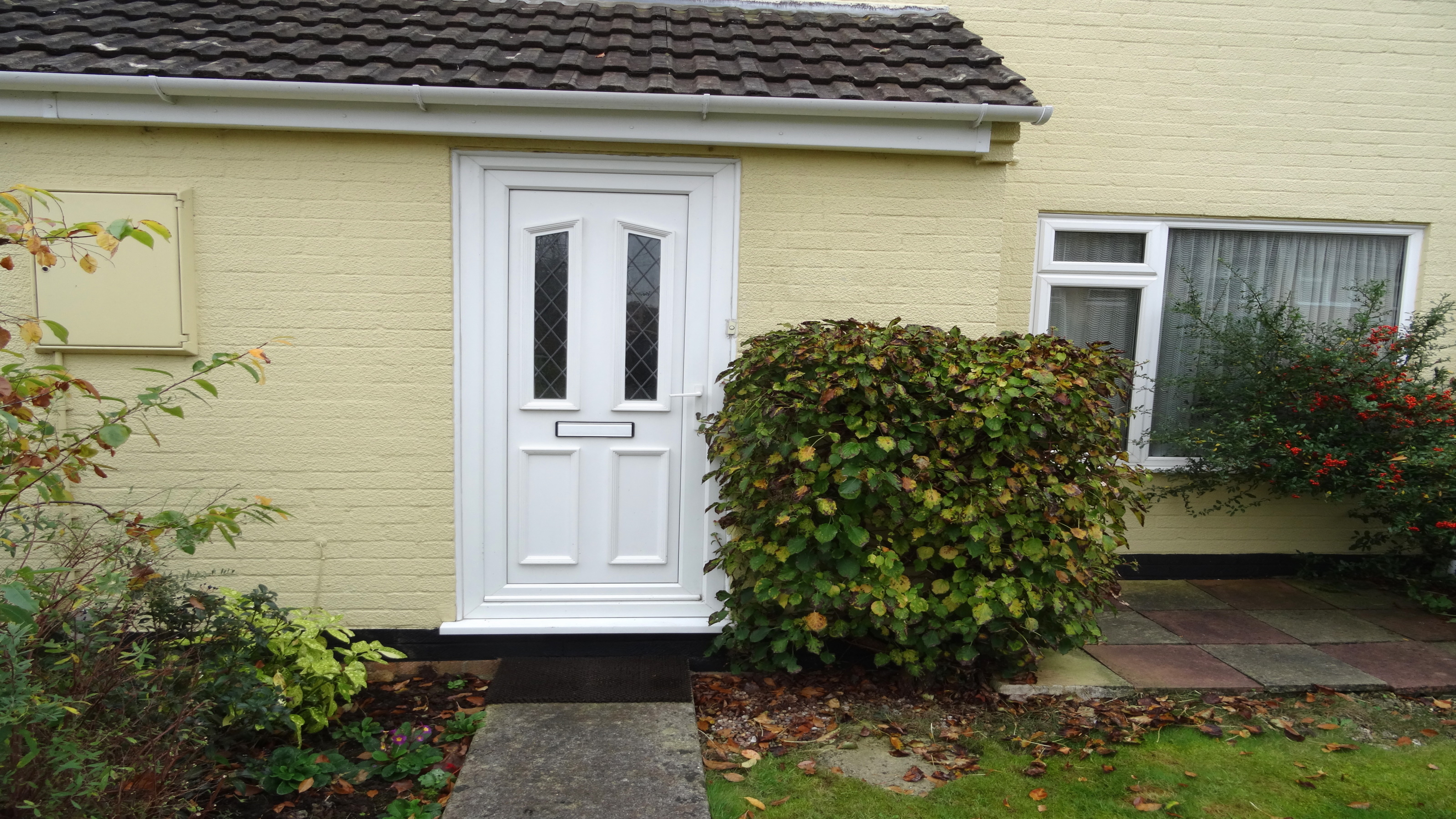How to Adjust a uPVC Door: What You Need to Know
Learn how to adjust a uPVC door with our easy to follow guide. We take a look at the popular butt, flag and rebate hinge types found on most doors

Learning how to adjust a uPVC door will be key (pun intended) if you're having trouble closing your front. Fortunately, we are here to tell you how.
There’s nothing worse than a door that drags on the floor or lets in draughts. With the cost of gas and electricity on the rise you want to make sure that your uPVC door fits snugly to its frame.
There’s a number of different hinge types for uPVC doors, but all let you make minor adjustments to a certain degree. Older uPVC doors with older Butt hinge types offer the least, but you can typically still get some help to stop the dropping. Newer hinges – like flag hinges – allow maximum adjustment to get the perfect fit.
There will come a time when no amount of adjustment will stop your door dropping or letting in cold air, so make sure you are ready for that day by taking a look at new front door ideas. However, in the interim, our DIY guide will take you through how to adjust doors with different hinge types and answer your questions.
How To Adjust a uPVC Door: Which Hinge Type Do I Have?
There are three different hinge types commonly associated with uPVC doors. These are:
- Butt (sometimes known as pencil or cylinder)
- Flag
- and Rebate hinges.
Each hinge fixes to the door and operates in slightly different ways.
Butt hinge
Bring your dream home to life with expert advice, how to guides and design inspiration. Sign up for our newsletter and get two free tickets to a Homebuilding & Renovating Show near you.
Butt hinges are typically found on older uPVC doors and have what are known as two leaves. One that attaches to the door the other to the door frame. Typically a pin runs through the top of the one attached to the door frame and into the other attached to the door. A bottom pin follows the same. These offer little or no adjustment.
Flag hinge
Flag hinges are the common hinge on more modern uPVC doors. They get their name from the fact that the part that is attached to the door is at the top of the hinge and is rectangular shaped — like a flag. These offer the most control over adjustment.
You can move them laterally (from side to side), vertically and closer to the door jamb — this is known as compression.
T hinges are very similar but the part that is attached to the door is in the middle of the hinge. These only allow lateral and vertical adjustment.
Rebate hinge
A rebate hinge is similar to a butt hinge but the hinge leaf (the part that attaches to the door) fits snugly against the door sash rather than on the outside like a butt or flag hinge. So when you close the door the hinge is hidden. Typically you can adjust laterally and vertically.
Now we are going to take a look at each different hinge type and tell you how you can adjust them.
How Do I Adjust Butt Hinges on a uPVC Door?
Butt hinges vary in design and generally offer the least in adjustability. Older butt hinges only have adjustable pins top and bottom. You will need to loosen the grub screw holding the pin in place and use an Allen key for minor vertical adjustments, but in some cases lateral movement as well.
Newer butt hinges often have two screws on the side as well as the pins top and bottom. These allow you to adjust for side to side movement. Use a screwdriver or Allen key to adjust.
What’s the Technique for Adjusting Flag Hinges on a uPVC Door?
Flag hinges adjustment screws are typically hidden away so you first need to get access to them. Remove the caps top and bottom with a small flat-headed screwdriver. Do the same with the large hinge cap. These might be held in by a couple of screws, loosen to remove.
The screw at the top of the hinge is used to adjust the height by around 4mm. Use an Allen key to lift as required. The horizontal screw offers side to side movement typically up to 5mm.
If available, the bottom of the hinge will house the compression screw. Again adjust using an Allen key.
How Can I Adjust Rebate Hinges?
These operate in a very similar fashion to butt hinges. They have top and bottom pins which are often covered with a cap which you need to remove to get access. Loosen the grub screw holding them in place and adjust with an Allen key.
For lateral side to side movement adjust the screws on the side of the hinge. Some rebate hinges are adjustable where the hinge connects to the door. They allow for compression so you get a tighter fit to the frame. If you have one of these use an Allen key to adjust.
How Do You Adjust a uPVC Door That Won’t Lock?
The common reason that a door won’t lock is because the door has dropped or moved away from its original position. The first thing you need to do is realign your door by adjusting the hinges. Once realigned, check if the door will lock.
If it is close to locking you can try adjusting the strike plate — the part on the door frame that the deadbolt goes into to lock the door.
If your uPVC door still won’t look after realignment it may be the lock that is the problem. This is rarely a simple fix and it might be time to call in a professional.
Alternatively, it might be time to think about getting a new door. But what should you get? You might have heard the name but what is a composite door? These are a popular choice nowadays and commonly replace old uPVC doors.
What Causes uPVC Doors to Drop?
Opening and closing a door produces general wear and tear and over time the hinges will loosen and cause the door to drop. To stop this happening you can regularly check that your hinges are not coming loose. If they are, make any minor adjustments to keep your door perfectly aligned.
What If I Adjust My uPVC Door Hinges and it Doesn’t Work?
If you have gone through the process of trying to adjust your hinges every way you can possibly think of and your door still won't close or lock properly, you could look at fitting new hinges, especially if your door is not that old.
But it might also be an indicator that it is time to update your uPVC door and frame for a new one. uPVC doors last anywhere from 10 to around 35 years depending on the quality. So if your door is well past the 10 or even 20 year mark it might be time for a change and to weigh up new front door costs.
Steve Jenkins is a freelance content creator with over two decades of experience working in digital and print and was previously the DIY content editor for Homebuilding & Renovating.
He is a keen DIYer with over 20 years of experience in transforming and renovating the many homes he has lived in. He specialises in painting and decorating, but has a wide range of skills gleaned from working in the building trade for around 10 years and spending time at night school learning how to plaster and plumb.
He has fitted kitchens, tiled bathrooms and kitchens, laid many floors, built partition walls, plastered walls, plumbed in bathrooms, worked on loft conversions and much more. And when he's not sure how to tackle a DIY project he has a wide network of friends – including plumbers, gas engineers, tilers, carpenters, painters and decorators, electricians and builders – in the trade to call upon.

